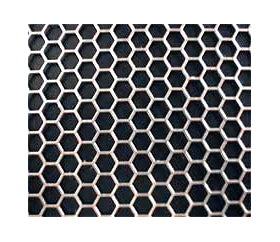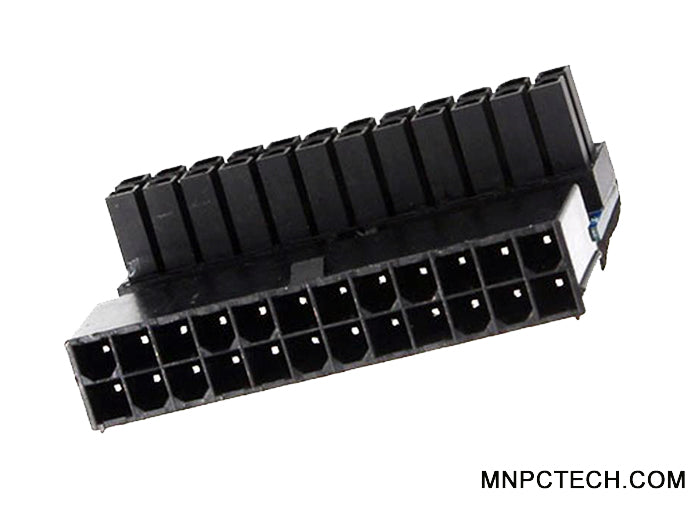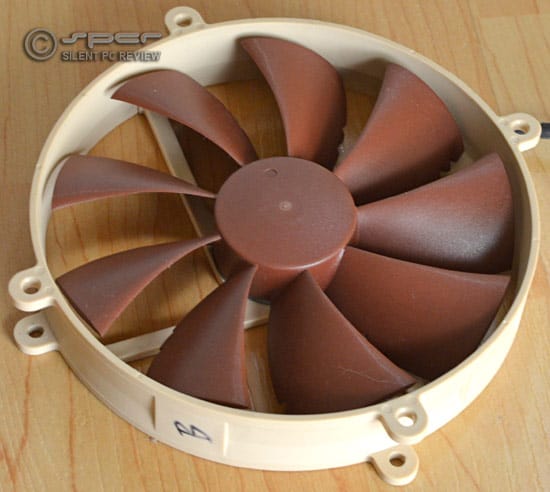I asked a local carpenter to make me a desk and it here is it. I planned a place for my rig.
1. Damping materials .... you could put adhesive vibration soundproofing on the interior bottom ... or even foam "egg crates" on the sides. See Item 3
2. You can buy a MoBo mounting plate and screw it to the base, you will want to have a plenum of some sort underneath to hide all the wires. Id make the side boards 1.5"Higher:
___________________________ Glass Top
|
|
|
|
|__________________________ Component Mounting Surface
|__________________________ Sliding Bottom Access Doors or Removable Panels provide a space to hide wiring
You don' want cable cluttering up the case under the glass
3. It's going to sound like a jet taking off with (8) 3000 rpm fans. You do not need both intake and exhaust fans. When you tuen off the exhaust hood in your kitchen, do you have an intake fan ? When you use an attic fans, do you just open windows or do you stick fans in each window ? When you are in a bedroom and put a fan blowing one way in one window and afan blowing the other way in the otjer ? or do you just open the other window .... if you blow air in, air will get out thru all available openings .... if you blow air out, air will get in thru all available openings
4. You don't want to be sticking ribbon able the round holes. You cold mount the MoBo Mounting plate on standoffs, and use right angle cable connectors pointing down toward running the cables into the plenum .... in the bottom of the base mounting surface an 8" x 8" hole will give plenty of room for holding cables. When done with cable routing, use a perforated metal sheet to cover the hole. You can gets this, grommets, dust filters cable mounts, fan hubs fom MNPCTech .... Bill is a great guy to work with ... check out his youtube videos
Modder's Mesh. Make fan guards, grills, cooling vents, window overlays. Improves airflow and looks great. Honeycomb Modder's Mesh is available in 12" x 12" or 12" x 24" sheet. (24" x 12" has oversize surcharge added at shipping) (79% airflow) is 22 gauge perforated plain steel. 1/4" hexagon...

www.mnpctech.com
Black 90 Degree Right Angle 24 Pin ATX EATX ITX Connector for Motherboard Mainboard by Mnpctech. This 24 pin to 24 pin 90 Degree Motherboard Connector Adapter allows you to hide your 24 pin Main board / Motherboard Cable. This saves you a great deal of time in making your own ATX 90 degree...

www.mnpctech.com
Hire Mnpctech to build the best gaming PC's for Twitch and Youtube Game Streamers. Crazy PC builds and PC mod's for giveaways to promote your new PC game release or expansion. Gaming PC for esports event awards and giveaway prizes. Custom made sorbothane isolation turntable feet audiophile...

www.mnpctech.com
5. Never, ever violate the 1st rule of water cooling....
Radiator Fans always blow in, no exceptions ever. .... There's a reson AIO manufacturers put this in their instructions ... I'd mount the two 560s on the sides with fans as intakes. See item 9 ... your complete enclosed volume will change over at least once per second.
6. I'd suggest a MoBo Mono Block
7. I am using 5 x 140mm of rad to cool two GPUS, CPU and MoBo Block with 1200 rpm fans. A 60mm thick, 140mm wide rad is good for about 85 watts at 1250 rpm with single fan, 103 in push pull per fan. Note that the rads will only cool about 60 % of ya calculated heat load because a) Not all components hit max at same time and b) the rest will be radiated off component surfaces rad shrouds, tubing, blocks etc. Not knowing ya build, I'll just show ya how to "do the math".
CPU = 150 watts
MoBo Block = 40 watts
Pump = 45 watts
GPU = 300 watts
So say you do the 4 GPUs, to produce a Delta T of 10C (ambient to coolant) that's = to 150 + 40 + 45 + (4 x 300) = 1435 watts x 60% = 861 watts for rads. With (8) fans, you are looking a heat carrying capacity of 680 watts (8 x 85) which will give your system a Delta T of about 12.7 C. At 1400 rom, you will increase to about 760 watts of cooling or a Delta T of 11.3C. With 1800 rpm fans, you'd have 976 watts or a Delta T of 8.8C ..... to hit the tarket Delta T of 10, 1500 rpm seems about right. I'd take the air in from the sides and out thru the rear. The vents like in your picture often vome with bent metal at the inclets. I would recommend these be used if that's not on the ones in the pictire... side ones should point down to favor air closer to the floor.
8. I see no need for a metal crate. Rads can be easily supported with wood blocking. You have other radiator options
<div align="justify"> An absolute high-end radiator with an exceptional price-performance-ratio. This new Phobya radiator offers not only excellent design and quality of manufacturing, it also provides excellent cooling performance.<br><br> The new Phobya radiators of the Xtreme series belong to...
www.xoxide.com
9. Your enclosure material is of no significance ... think of a house ... it's designed to keep heat from passing thru ... turn on the *** single *** attic fan and open a few windows and ya enclosure is cool in a jiffy. All that matters here is air flow. Remember ... whatever you see for cfm and air flow on the box or spec sheet for a fan reality will only deliver 50 % or less.
This is just a quick graphing demonstration of why fan box specs using static pressure and max air flow are generally poor tools in comparing fan performance. Very much like pumps, fans have a pre…

martinsliquidlab.wordpress.com
Say you choose 1500 rpm medium SP Fans at 80 cfm ... expect each fan to deliver about half that ... say 40 cfm.
-Your "case" is about 5.25 cubic feet
Each fan moves 40 cubic feet per minute
You have 8 fans on the rads alone
The rule of thumb for 1200 fans is 75 - 100 calculated watts per 140mm fan ...
The rule of thumb for 1500 fans is 100 - 130 calculated watts per 140mm fan ...
At 1435 calculated watts with 4 GPUs ... and say 115 watts for fans... I'd go with 12 fans ... 8 on the rads and 4 additional. With 12 fans at a real 40 cfm, let's do the math:
Let's just use the rad fans ... 8 fans x 40 cfm = 320 cuft or air moves in and out of that case every minute ... in other words.... the entire air volume of that enclosed area will be exhausted
once per second.
Include fan and rad gaskets
Buy XSPC Radiator Gasket, 560mm, 2-Pack: Water Cooling Systems - Amazon.com ✓ FREE DELIVERY possible on eligible purchases
www.amazon.com
10. Don't apologize ... you are talking 1425 watts .... how much heat do 6 - 9 watt HDs create in a 5 cf space ? That's the same as 190 HDs
11. Maintenance of custom loops is very simple. Provided you choose components accordingly ... I like the 7 port models. With rads installed in the sides, you will wat to use the side facing the bottom of the case as your drain port. I'd connect an MxM connector here and F x F Valve Drill a hole below the valve opening. You will also need another M x M connector them a F Quick Disconnect fitting attached to 3 feet of clear tubing. When you want to drain the system .... just grab hold of the Quik Disconnct, insert the male screw rheaded fitting up thru the hole and screw into vale bottom. Set the tube in a bucket and get ready to drain .... open the rad port on the opposide side (on top since rads are installed sideways) and system will drain. Flush the system with DW a few times and then close the valve and fill the system. If those top ports are not at the highest points in the system ... you can install a rise w/ valve or just riser and plug
12, Id definitely us a dual pump ... and besides they look so cool mounted on their little stand and heat sink
Swiftech MCP35x2 Dual Pump Heatsink (MCP35X2-HS)
www.frozencpu.com
13. Back in the day, peeps were posting how good Noctua's fans were and back then it was well deserved .... and while those posts are being reparroted today, the data pover the [past 7-8 years just does not support the claim anymore. That day was long ago ... Take the Noctua fans off a noctua cooler and replace them with Phants... and at the same rpm, the CPU gets 6.3C cooler.
140 mm fans from Noctua, Phanteks, and Xigmatek battle in our latest fan roundup with one emerging as a clear winner in both thermal performance and acoustics. May 21, 2013 by Lawrence Lee Last month we staged an epic shoot-out among some popular 120 mm fans. Some great sounding fans emerged but...

silentpcreview.com
Scroll , scroll, scroll all the way down and look at the performance table... while the Nocs do well, they are not the best ... the best are half the price....
"The Phanteks PH-F140HP/TS is the clear winner in every respect. It edged out the new Noctuas every step of the way, delivering the best overall results of any fan we’ve tested thus far. To top it off, it had cleanest, smoothest sound of all the new fans in this roundup. If we had to start from scratch, this might be our new reference model. "
I'm very down on the 200mm fan idea .... Aesthetically not attractive ... Id keep the 140s on the rads and add 2 extra on each side or kust put (4) 140s on the front. Tried 200s, wasn't satisfied. It's not just about moving air ... i'ts also about creating air currents where your componentry is ... finally with a mix of fan sizes, slower rpm generally means lower SP. I find in most cases they don't even publish SP for 200m fans ... I find that kinda worrying.
As for brands, the only fans we have tested here or seen tested since 2013 that compete with the Phanteks are the Silent Wings 3s
14. Your MoBo will provide all the fan control you could possible desire. My Setup ... w/ 780 watt calculated load....
Channel 0 = CPU MoBo Header ==> Pump No. 1 / CPU_ALT MoBo Header ==> Pump No. 2
Channel 1 = CHA_1 MoBo Header ==> Fan Hub 1 ==>(6) 1250 rpm Phanteks DCV fans on 45 mm thick rad w/ 7 ports and inlet / outlet temp sensors
Channel 2 = CHA_2 MoBo Header ==> Fan Hub 2 ==>(4) 1250 rpm Phanteks DCV fans on 45 mm thick rad w/ 7 ports and inlet / outlet temp sensors
Channel 3 = CHA_3 MoBo Header ==> Fan Hub ==>(6) 1250 rpm Phanteks DCV case fans
That was then original set up w/ fans in push pull ... I later took off one set of fans with just 3 on the 420 rad and 2 on the 280 rad ... never got around to putting them back
In the MoBo's Fan Control Software ...
All fans are set to turn off when CPU temps are < 38 degrees ... the system cools fine running browsers, spreadsheets, word processing and AutoCAD
When CPU temps hit 40C, case fans turn on ... there is (5) blowing in and one blowing out so there is anough excess case proessure to force a small anmount of air thru the rads.
When CPU temps hit 45C, rad fans turn on ...
Fans ramp up in accordance with the fan curve temp settings .... at 80C they are set to 100%,m this has never happened.
Under Stress testing ... Furmark / RoG Real Bench, rpms will ramp up to a bit over 800 rpm .... at about 850 you can just start to hear them
Worse case gaming they are 600 - 625 rpm ... mostly lower
At 1250 rpm GPU temps are 39C ... no temp difference between the 2 cards ... when gaming thy hit 42C at about 625 rpm
Rad fans ramp up over 25 seconds and ramp down in response to fan curve over 180 seconds to remove latent heat from the coolant (2 liters)
Case fans ramp up to fan curve rpms over 25 seconds and ramp down over 12 seconds.
12. This box is used as our cooling test bed ... its has temp sensors, accurate to 0.1C on in'et and outlet of each rad as well as ambient air and inside the case air sensors. All temps are displayed on a 5 channel LCD screen on case front (Reeven 6 Eyes)






 )...
)... ), you have lots of space for a hot and a cold side. Cold side for the reservoir and air intake, hot side for outtake (the back, obviously) and radiator placement.
), you have lots of space for a hot and a cold side. Cold side for the reservoir and air intake, hot side for outtake (the back, obviously) and radiator placement.






